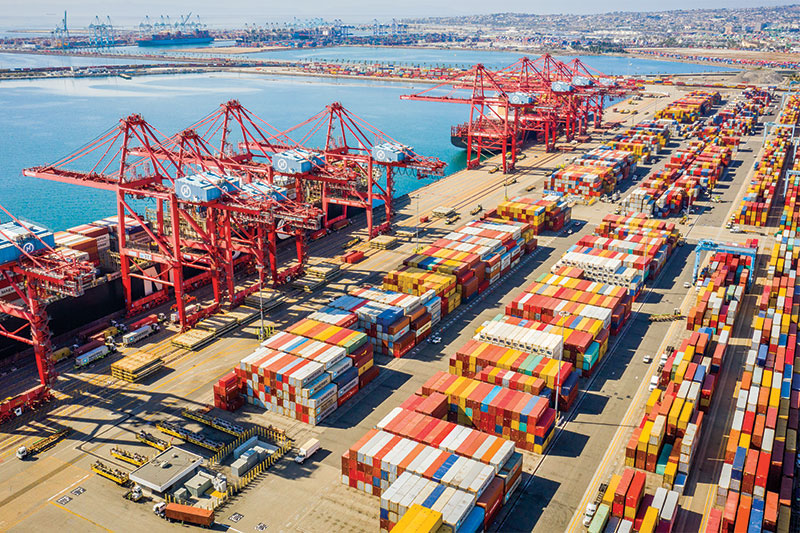Port Tracker report calls for new monthly and annual volumes for U.S-bound retail container imports
United States retail container imports are on pace to set a new record, driven by ongoing elevated consumer demand stretching supply chains, as well as retail shippers shifting focus from back-to-school to the holiday Peak Season, according to the most recent edition of the Global Port Tracker report, which was issued today by the National Retail Federation (NRF) and maritime consultancy Hackett Associates.
The ports surveyed in the report include: Los Angeles/Long Beach; Oakland; Tacoma; Seattle; Houston; New York/New Jersey; Hampton Roads; Charleston, and Savannah; Miami; Jacksonville; and Fort Lauderdale, Fla.-based Port Everglades.
Authors of the report explained that cargo import numbers do not correlate directly with retail sales or employment because they count only the number of cargo containers brought into the country, not the value of the merchandise inside them, adding that the amount of merchandise imported provides a rough barometer of retailers’ expectations.
“Back-to-school supplies have been hit by the same supply chain disruptions and port congestion that have affected other products this year, but retailers are working hard to ensure that school and college goods are where they need to be,” NRF Vice President for Supply Chain and Customs Policy Jonathan Gold said in a statement. “Strong consumer demand has outpaced supply chain operations since late last year and could remain a challenge as the holidays approach. The continuing lack of labor, equipment and capacity has highlighted systemic issues and the need to create a truly 21st century supply chain to ensure resiliency against the next major disruption. Passage of infrastructure legislation currently pending in Congress is a key step in that direction. We need continued focus by the administration to help address these issues as well.”
For June, the most recent month for which data is available, import volumes came in at 2.15 million TEU (Twenty-Foot Equivalent Units), down 7.8% compared to May’s record-high of 2.33 million TEU and up 33.7% compared to June 2020, a period when many stores remained shut down because of the pandemic.
Port Tracker issued the following projections for July and beyond, including:
- July, at 2.22 million TEU, for a 15.7% annual increase;
- August, at 2.37 million TEU, for a 12.6% annual increase, and on track for what would be a new monthly record, as Peak Season commences, with retailers stocking up for the holiday season (the report observed that myriad retailers are moving shipments up in 2021 in an effort to make sure sufficient inventory is available during the holiday season;
- September, at 2.21 million TEU, for a 4.9% annual increase;
- October, at 2.15 million, for a 3% annual decrease, which would represent the first annual decline going back to July 2020;
- November, at 2.07 million TEU, for a 1.5% annual decrease; and
- December, at 2.02 million TEU, for a 4.1% annual decrease
Total volume, for the first half of 2021, was up 35.6% annually, and the total 2021 volume is pegged at 25.9 million TEU, for a 17.5% annual increase. Should the 2021 estimate come to fruition, it would stand as a new record, coming in ahead of the previous record set in 2020, at 22 million TEU.
Hackett Associates Founder Ben Hackett wrote in the report that while many economic indicators—like U.S. GDP at 6.5% in the second quarter; personal income up to $26.1 billion in June, and consumer spending rising $155.4 billion—all positive, there is concern regarding above-average inflation, and the potential for more inflation in the near future, potentially threatening demand.
“The strain of the continuing economic expansion is putting considerable pressure on the logistics supply chain,” Hackett wrote. “We’re seeing a lack of shipping capacity combined with port congestion as vessels line up to discharge goods from both Asia and Europe. Delays are stretching to landside as port terminals struggle with space shortages, and labor challenges are affecting ports, railroads and trucking companies alike. This part of the recovery is not a pretty sight and blame is being spread like butter.”













